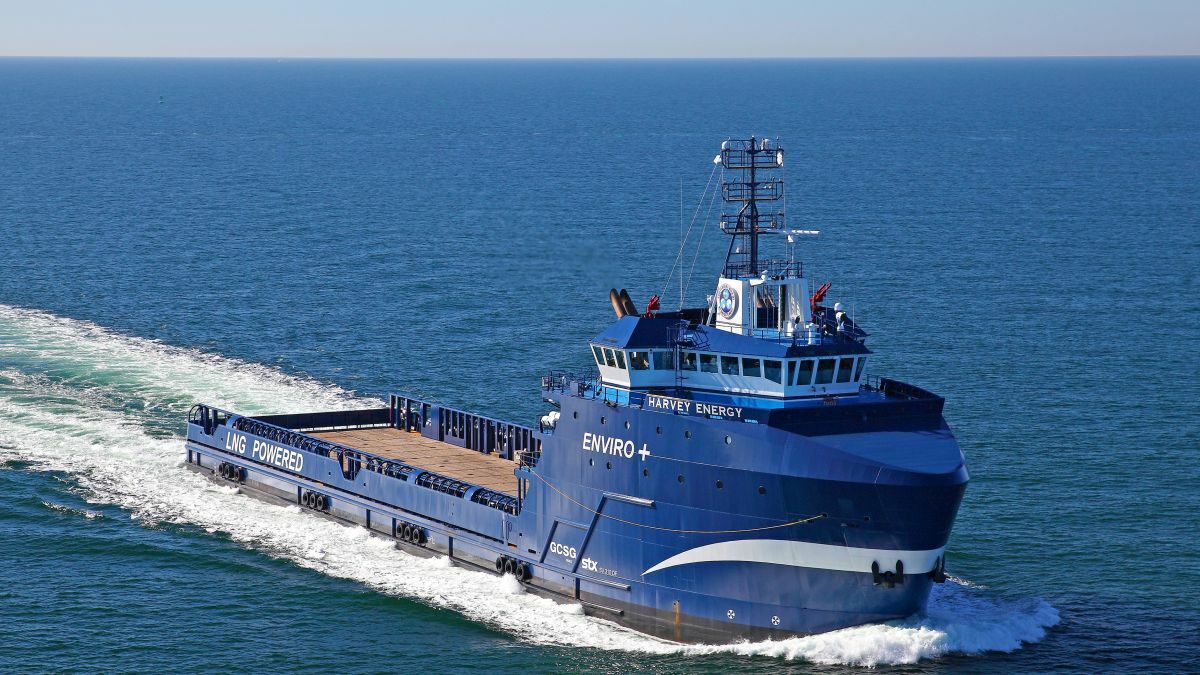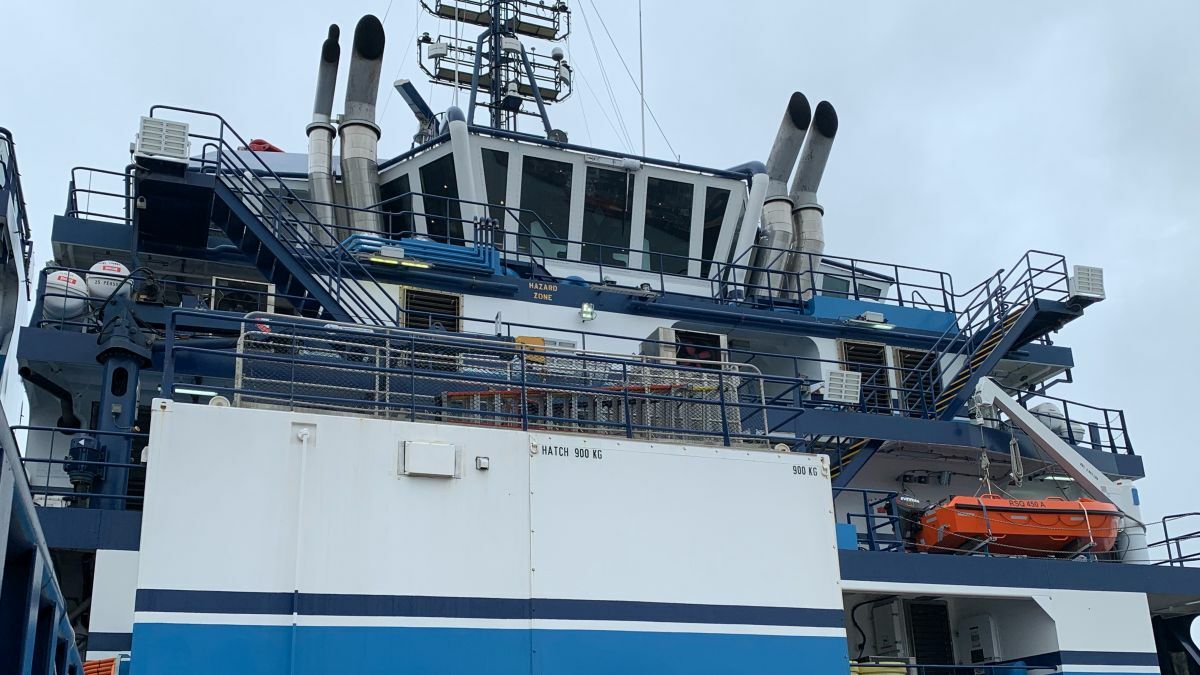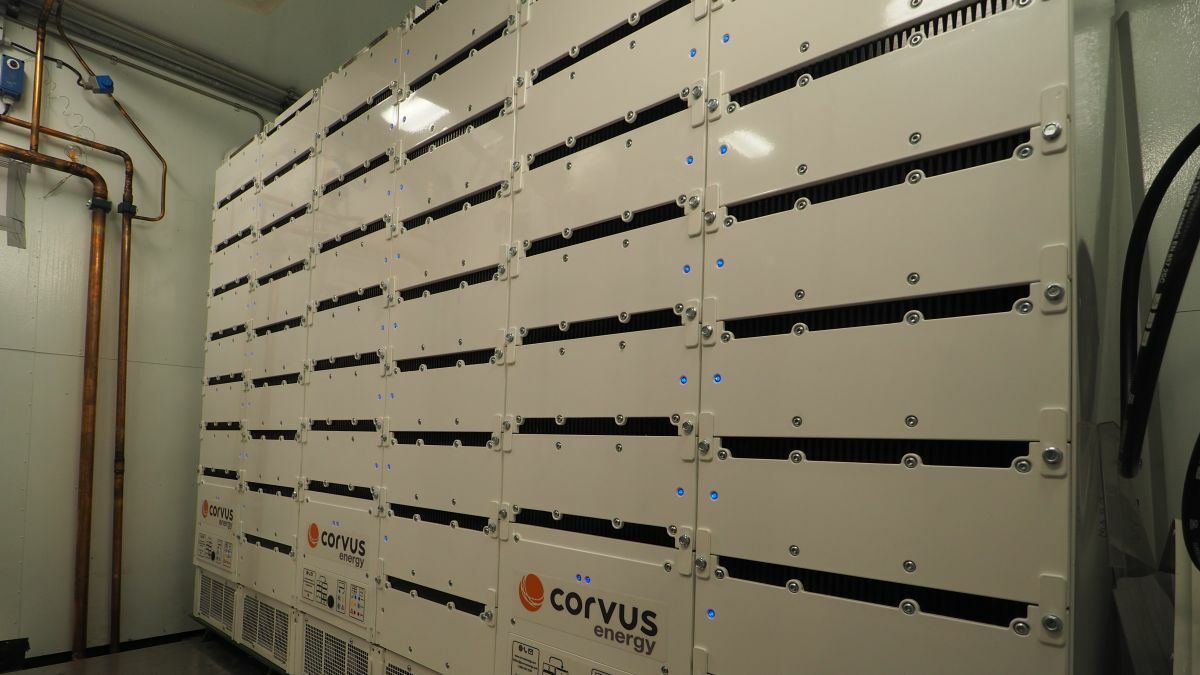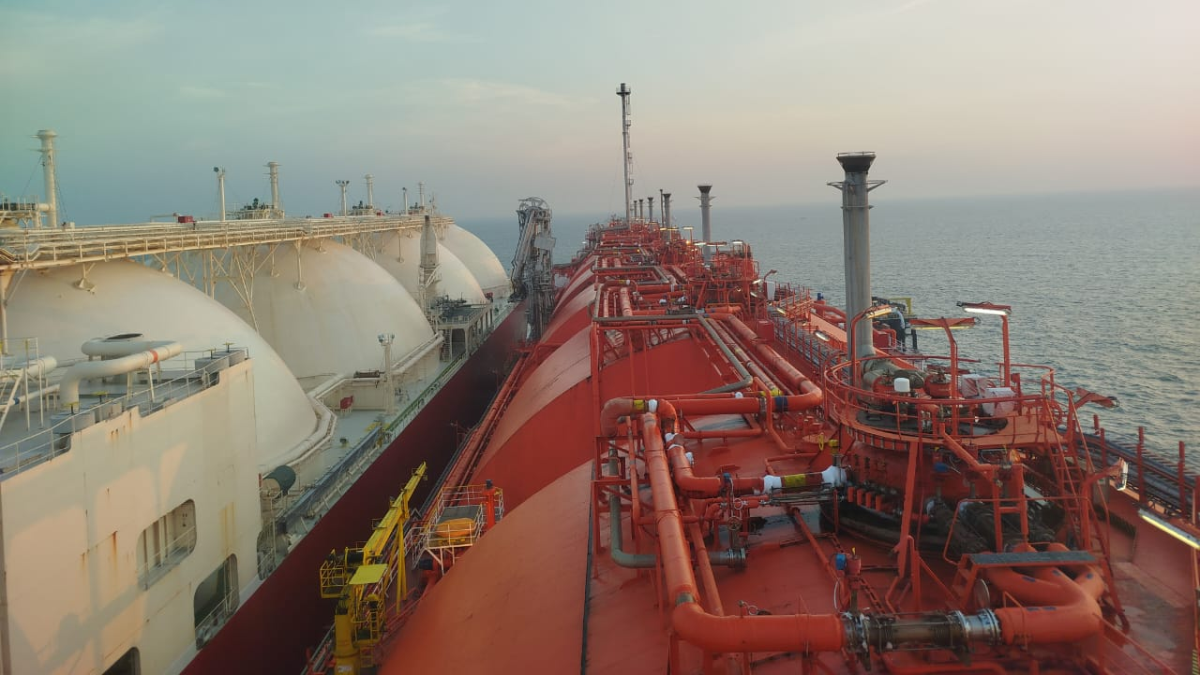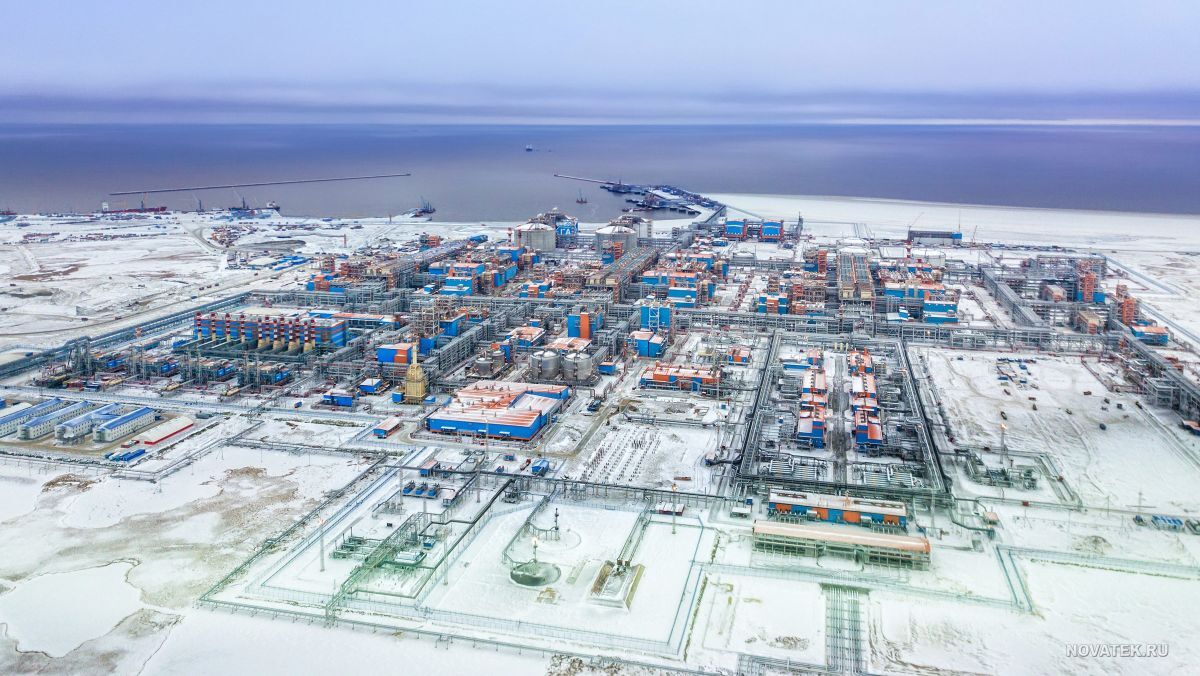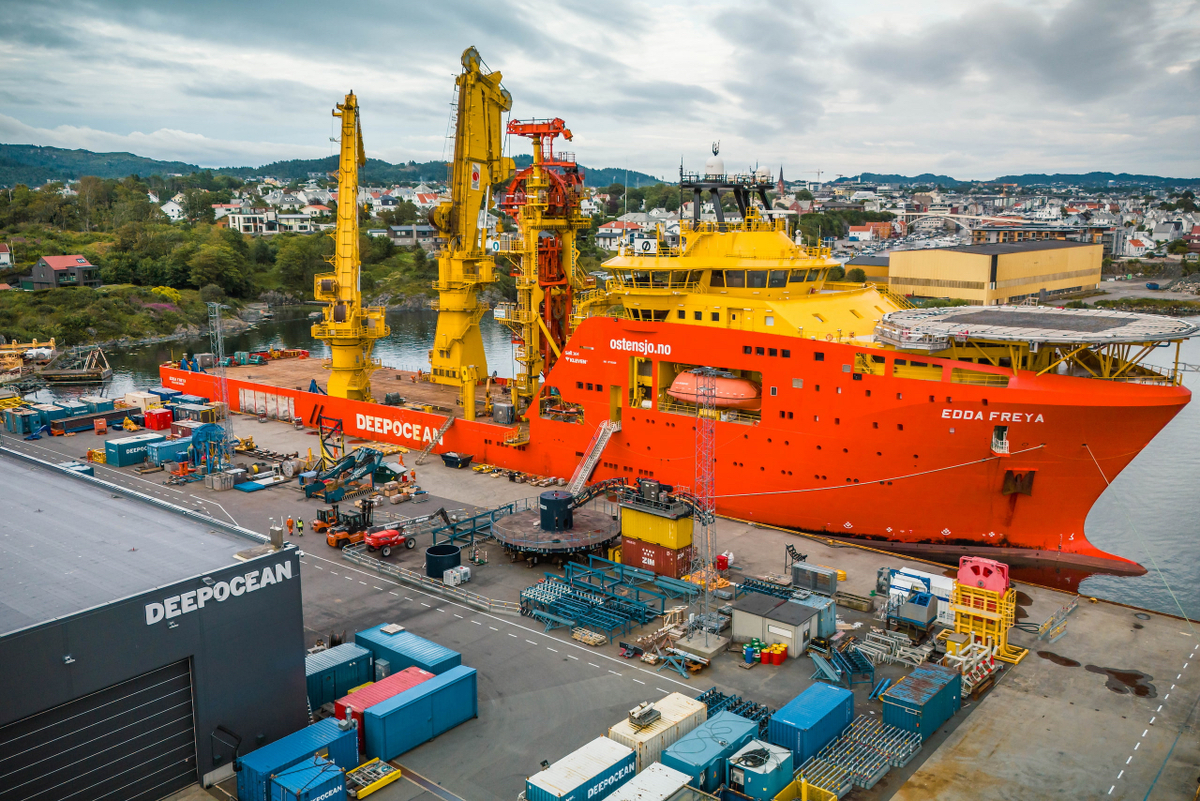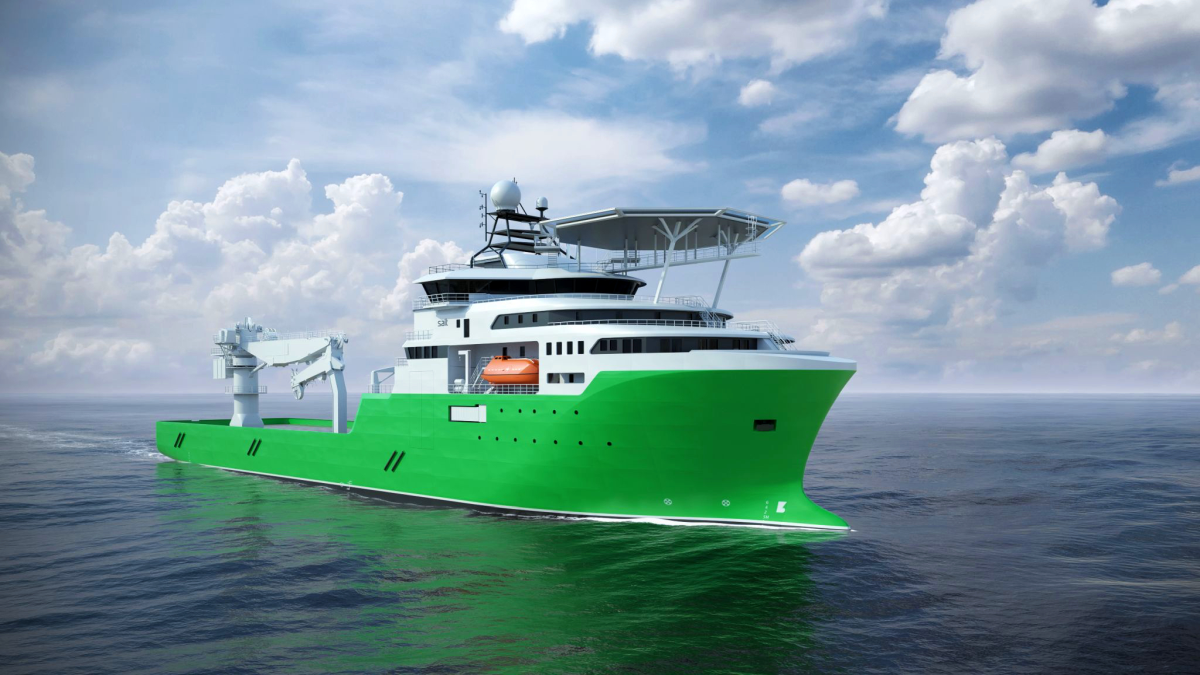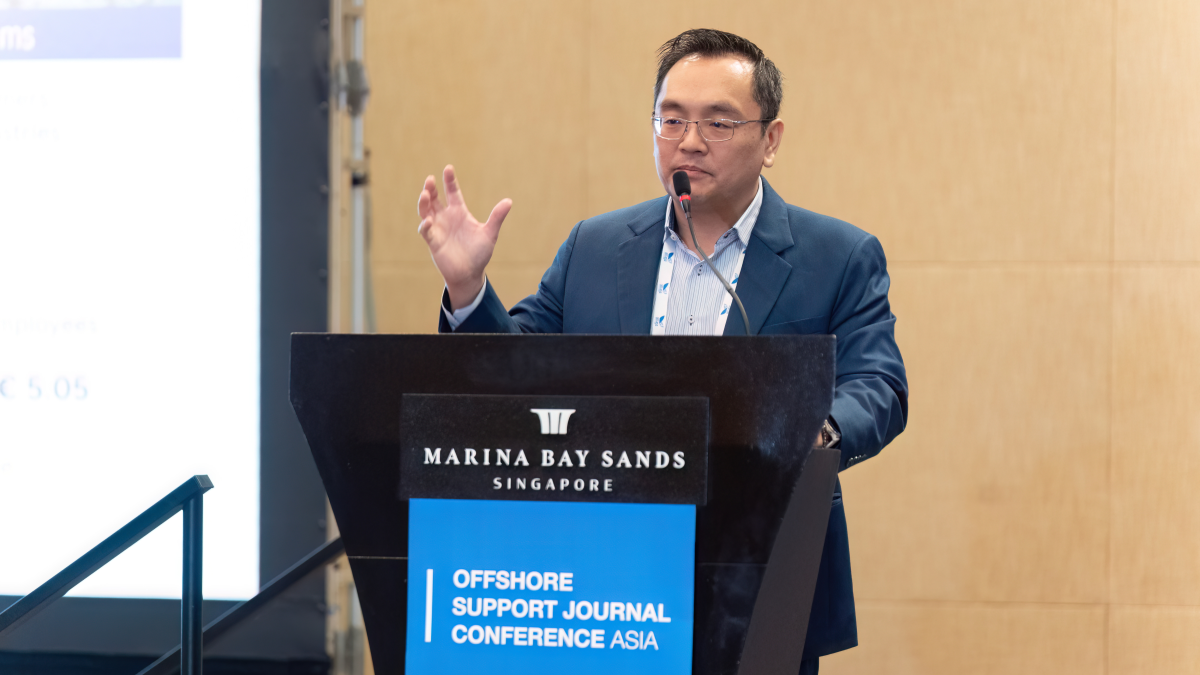Business Sectors
Events
Contents
Harvey takes the tri-fuel challenge with batteries and LNG
Dual-fuel engines running on LNG and diesel can be complemented with batteries to cut harmful emissions
Offshore support vessel owners can benefit in terms of reduced fuel costs and fewer emissions by retrofitting ships with hybrid propulsion systems or opting for LNG fuel.
A few have opted for both, such as Harvey Gulf International Marine, which intends to install electric propulsion and energy storage systems on a fleet of 10 vessels. Of these, the US vessel owner will retrofit four LNG-powered supply vessels with batteries over the next two years.
Harvey Gulf ordered energy storage systems (ESS) from Wärtsilä Corp to retrofit these four platform supply vessels (PSVs), which will become some of the first tri-fuelled vessels in the offshore sector.
It intends to retrofit the PSVs – Harvey Power, Harvey Liberty, Harvey Freedom and Harvey America – in 2021 and Q1 2022. This follows a trial installation of a Wärtsilä ESS on Harvey Energy PSV, which was the first ABS-classed dual fuel and battery vessel and the first US-flagged OSV equipped with a battery/converter system.
When the upgrade project is completed, all five vessels will be capable of full tri-fuel operation, providing Harvey Gulf with the most flexible, fuel efficient class of PSVs in the Gulf of Mexico.
“The conversion to tri-fuel technology is a tremendous addition to our already successful Harvey Energy class PSVs,” said Harvey Gulf president and chief executive Shane Guidry.
Adding ESS units should improve overall vessel fuel consumption, while lowering CO2 and greenhouse gas (GHG) emissions.
“This fleet of vessels will be crucial in assisting our clients’ efforts to achieve net carbon zero, and we will continue to listen to them and invest in technology that will assist with their goals,” said Mr Guidry.
Wärtsilä ESS will power the PSVs alone when vessels are stationary in the field or in port, greatly reducing fuel consumption and exhaust emissions.
The PSVs will also be capable of closed-bus dynamic positioning (DP) operation, running only one engine augmented by the ESS.
Each vessel will be fitted with a Wärtsilä ESS comprising a closed bus-tie 1,360 kW drive with 746 kWh and 1,100 V direct current batteries.
This investment in ESS modules is part of Harvey Gulf’s overall strategy of cutting emissions using batteries. It intends to introduce ESS units on up to 10 vessels in the fleet. Once completed, the Louisiana-based OSV owner will be one of the largest owners and operators of offshore vessels with onboard energy storage.
Mr Guidry said battery systems would be installed on one of its newest multi-purpose support vessels (MPSVs). Two units will be installed on Harvey Subsea, making it the only MPSV in the US that is dual fuel and runs electric battery power.
The DP2-class vessel has an overall length of 103.7 m, beam of 22.3 m and maximum draught of 7.47 m. It has a 250-tonne capacity offshore crane, helideck, remotely operated vehicle hangar and control room and accommodation for 87 personnel.
Its propulsion comes from four Wärtsilä 6L32 diesel generators that drive two Schottel SRP 630 azimuthing, nozzled, fixed-pitch propellers with variable frequency drive motors.
Harvey Subsea also has three Schottel STT5 fixed-pitch bow thrusters with variable frequency drive motors.
An energy storage system is also being deployed on 89-m PSV Harvey Champion, which was built to a Vard 1 301 design, with a beam of 19.5 m, design draught of 6.1 m and cargo deck area of 940 m2.
In addition, four batteries will be installed on three of Harvey Gulf 300 class and 310 class PSVs, Harvey Supporter, Harvey Hawk and Harvey Condor, with two modules being installed on one of those vessels.
Balancing opex and capex
There is growing recognition that the operating cost savings from using batteries in hybrid propulsion will offset in the long term the additional upfront costs. Wärtsilä Marine Power director of business development Giulio Tirelli explained how vessel owners should evaluate the balance between higher capital expenditure (capex) for hybrid propulsion, versus the anticipated savings in operational expenditure (opex) and maintenance.
“It is about finding the balance between everyday needs of low power with heavy assist and high bollard pull for a short period of the time,” he said during Riviera Maritime Media’s Hybrid and electric tug viability: the future’s bright webinar on 3 September 2020.
“We need to retain this capacity, but finding the balance is challenging. Hybrid helps find this balance between opex and capex,” said Mr Tirelli. “Hybrid propulsion needs to be tuned for the best fuel consumption and least extra capex. There are lots of possibilities,” he added.
“This fleet of vessels will be crucial in assisting our clients’ efforts to achieve net carbon zero”
There are also other opex reduction benefits from using hybrid propulsion. In one recent newbuild delivery, maintenance costs were cut by 50%, said Mr Tirelli.
There are also crew comfort benefits. “There are no emissions or noise when they are driven by electric only,” he explained. In some newbuildings, owners have reduced the size and power from their engines, mitigating some of the higher capital costs.
Harvey Gulf has ordered ESS units from Bergen Norway-headquartered Corvus Energy for its OSVs. Corvus senior vice president for sales Christian Søvik anticipates more orders from Harvey Gulf and other owners for onboard batteries.
“We see a great potential in ESS installation for retrofitting OSVs, both in reduced emissions, great fuel saving and a significant amount of saved costs for planned maintenance, due to reduced running hours on diesel generators,” Mr Søvik said.
“For newbuilds, we see that the industry is changing its mindset and ESS will be a crucial part of the power plant for new vessels, to ensure the most optimal and efficient operation,” he said, while acknowledging there were not many OSV newbuildings in the pipeline.
The majority of OSVs retrofitted with ESS have been converted using Corvus’ Orca battery units. “These are really compact, powerful 3C batteries, which can charge and discharge three times the nominal kWh, and are designed as per the strictest class rules,” said Mr Søvik. They are approved according to the Propagation Test 1, also known as Passive Single-cell Thermal Runaway protection.
For a PSV, a 620-870 kWh battery is the most common installation, with the 3C rating.
“Our Orca Energy battery is compact but still has the amount of energy needed to keep the vessel powered in the period stated for any given operation,” Mr Søvik said.
“For subsea support, and larger offshore subsea construction vessels, the battery size will increase, and owners install more racks of the same battery to increase energy and power.”
Growing orderbook
Corvus ESS modules are deployed on PSVs, construction vessels, MPSVs and shuttle tankers, improving fuel efficiency in operations with high power load variability, for energy efficient transits and during DP. They can be used for peak shaving and load levelling, and can be used for spinning reserve and battery backup power on vessels.
Harvey Gulf is following in the footsteps of Seacor Marine, which ordered Corvus ESS for four of its PSVs and three more owned by a joint venture with COSCO Shipping.
US-based Seacor contracted Corvus for Orca lithium ion-based ESS units for hybrid power systems on three PSVs acquired by this joint venture.
These batteries will provide spinning reserve during critical vessel operations, including on DP and peak shaving, enabling the diesel engines to operate more efficiently.
In North Sea offshore operations, Norwegian shipowners – DOF, Eidesvik Offshore, Havila, North Sea Shipping, Østensø Rederij, Solstad and Ugland – have hybrid OSVs in their fleets, while Dutch owner Fafnir Offshore and Denmark’s NKT also have hybrid offshore vessels serving in the region.
Owners are also investing in ESS modules in offshore renewables. For example, in the UK, SEC Marine is supplying a 22-m vessel for crew transfer to offshore windfarms, with hybrid propulsion incorporating Corvus batteries.
In October 2020, Vard Electro selected Corvus to supply lithium-ion ESS for a vessel being built at Vard Vung Tau shipyard for Greater Changhua windfarms. This service operation vessel will be built to a Vard 4 19 design with an overall length of 84.4 m and beam of 19 m. It is designed to accommodate 89 personnel, transfer technicians to installations and store spare parts and tools for operations on offshore windfarms in the harsh environment in the Taiwan Strait.
“Hybrid helps find the balance between opex and capex”
Other OSV owners are considering investments in newbuildings with hybrid-electric propulsion to reduce operating costs. Edison Chouest Offshore has selected hybrid propulsion for a pair of azimuth stern drive (ASD) offshore terminal support vessels it is building to support ExxonMobil’s operations in Guyana.
These vessels will be built at Chouest’s own shipyard in Louisiana, US, to a Damen ASD 5016 design to provide escort, hold-back, hose-handling and maintenance duties for a floating production storage and offloading (FPSO) vessel ExxonMobil will be deploying on the Liza oilfield.
These 50-m vessels will also provide emergency response duties, with a fire-fighting system on board to FiFi1 class and oil spill recovery equipment.
Each will have twin C-280 engines and azimuth thrusters on their stern, generating 120 tonnes of static bollard pull. When they are waiting for work, their power will come from a hybrid propulsion system installed in the engineroom.
ABB has supplied hybrid-electric propulsion for China’s first emergency response and rescue vessel, built for Shenzhen Maritime Safety Administration by Huangpu Wenchong Shipbuilding. Shenhai 01 will conduct rescue operations and emergency response with twin Azipod electric propulsion.
It can be fully powered by batteries for up to three hours of operations, important for safe rescue in areas affected by hazardous gas. This 78-m vessel features a full scope of ABB’s electric, digital and connected solutions, from bridge to propeller, with batteries, automation, power management and control systems.
Shenhai 01’s power is controlled by ABB’s integrated power and energy management system (PEMS) to optimise onboard energy utilisation. PEMS controls three sets of diesel generators and two sets of lithium-ion batteries, with total capacity of 1,680 kWh.
Hybrid versus all-electric propulsion
Damen Shipyards product manager for tugs, Erik van Schaik, explained how vessel owners should also consider going fully electric with batteries and quayside charging.
He evaluated the total cost of ownership of an OSV that could be all-electric or with hybrid systems, including comparing capital expenditure, fuel, urea, electricity and maintenance costs. He also compared emissions of CO2, NOx and particulate matter from hybrid and electric power with diesel only. The results are displayed in the following table.
|
OSV propulsion concept cost comparison and emissions |
||||
|
Diesel |
Diesel + SCR |
Battery hybrid + SCR |
Electric |
|
|
Capex |
100% |
105% |
140% |
200% |
|
Fuel/urea costs (IMO Tier 3) |
100% |
100% |
85% |
0% |
|
Electricity costs |
0% |
0% |
15% |
100% |
|
Maintenance costs |
100% |
100% |
75% |
50% |
|
CO2 |
100% |
100% |
85% |
0% |
|
NOx |
100% |
20% |
15% |
0% |
|
Particulate matter |
100% |
100% |
85% |
0% |
|
(source: Damen) |
||||
Hybrid propulsion selected for unmanned survey vessels
Hybrid-electric propulsion has been chosen for unmanned surface vessels that will be used for surveying offshore oil and gas and renewables infrastructure.
Grovfjord Mek Verksted (GMV) is building non-crewed vessels for Ocean Infinity’s Armada series. It has selected Volvo Penta and Danfoss Editron to provide energy management and hybrid-electric propulsion.
This will include Volvo Penta’s direct current (DC) gensets and Danfoss DC grid control system.
Danfoss will supply the energy management system and propulsion control for each vessel. A Volvo Penta D8 MH variable-speed engine will power the marine gensets on these Armada vessels. Danfoss controls will optimise the use of the D8 engine for the most efficient power and consumption performance and an optimal environmental footprint.
Each Armada vessel will be able to launch remotely operated underwater vehicles for subsea surveys. The first four vessels are scheduled for delivery to Ocean Infinity in 2021.
Related to this Story
Events
Offshore Support Journal Conference, Americas 2025
LNG Shipping & Terminals Conference 2025
Vessel Optimisation Webinar Week
© 2024 Riviera Maritime Media Ltd.


